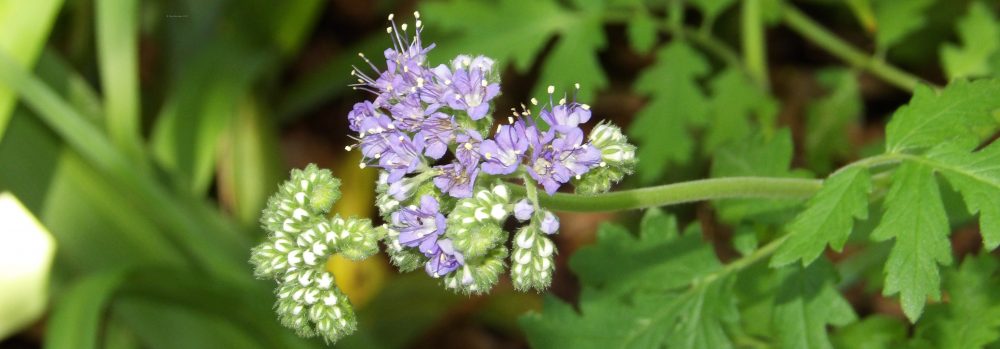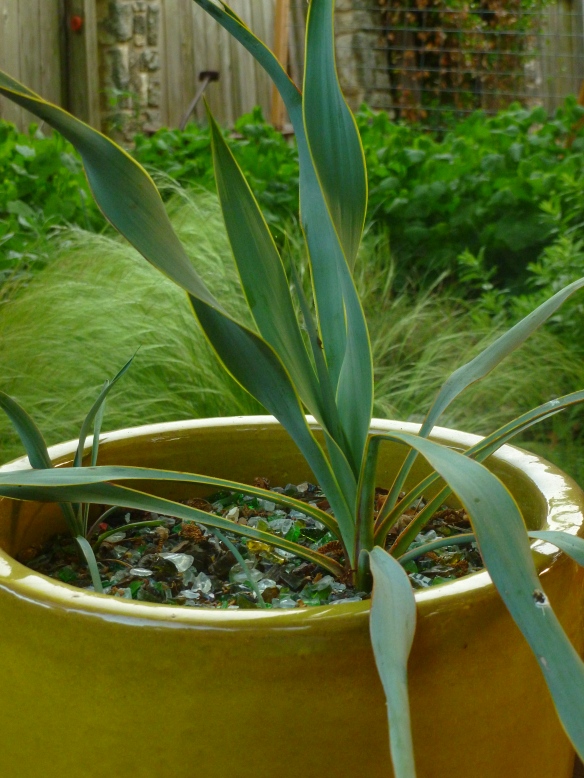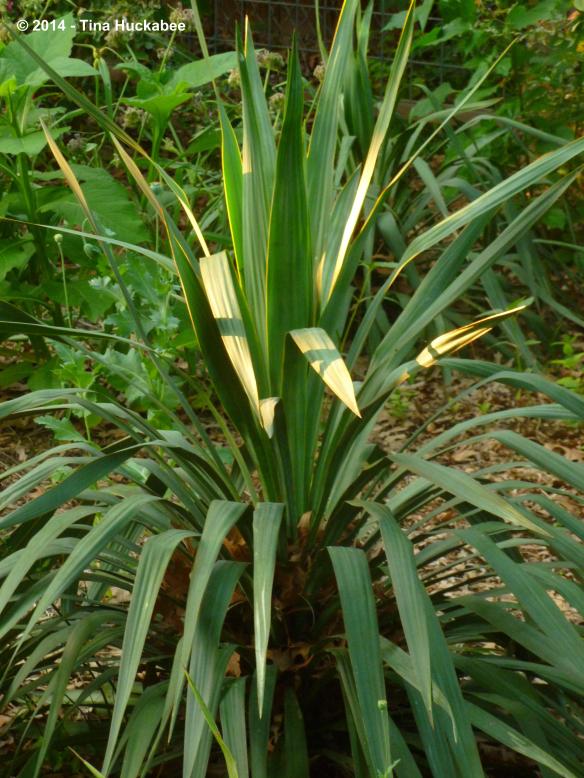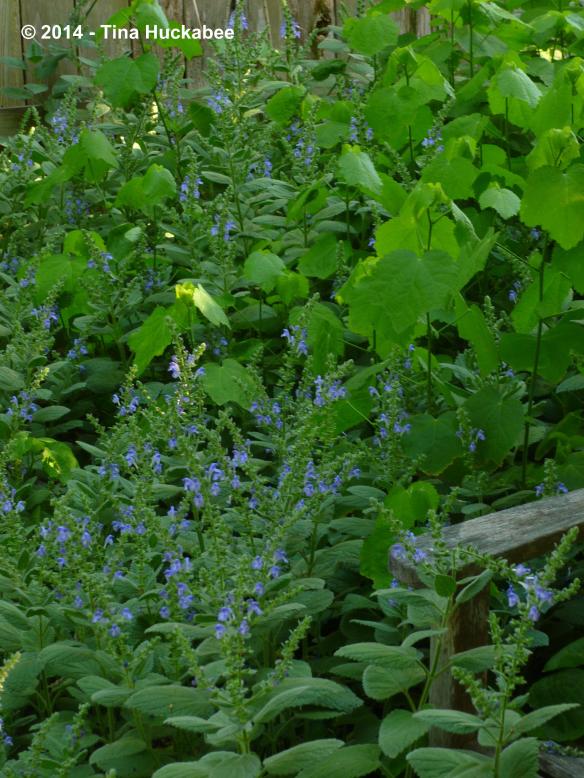We’ve received a little rain here in Austin, Texas and so continue our verdant spring before the summer heat fries everything in the garden. I particularly like this lush threesome of the glossy, dark green-leafed Star Jasmine vine, Trachelospermum jasminoides, fronted by the soft, graceful Inland Sea Oats, Chasmanthium latifolium, further fronted by an arching American Beautyberry, Callicarpa americana.
I’ll remove the Inland Sea Oats next year to give the Beautyberry room to grow. For now, I like the array of foliage these three plants provide in this shady spot.
Sedum, Sedum potosinum, is delightful in the garden; its delicate, fleshy foliage hugs the ground and rocks as it spreads. It is attractive before it blooms,
and during bloom time.
All of the Fennel plants in my gardens are still gorgeous this May.
I’ve seen a few butterfly caterpillars chomp, chomp, chomping, but apparently not enough to eat the Fennel to the ground.
This Pale-leaf Yucca, Yucca pallida,
echoes the yellow of its home with stripes along the edges of its leaves.
I fell in love with the Corkscrew Rush, Juncus effusus, when I visited another garden.
It requires more watering than I typically tolerate from my plants (twice/week during our summers), but I don’t consider that onerous and this sedge plant is a fun addition to my gardens.
I enjoy the play of late afternoon light on this Soft-leaf Yucca, Yucca recurvifolia.
I have several of these non-native yuccas in my gardens and appreciate their tolerance of my somewhat heavy soil.
The pairing of the bright green, tropical foliage of the not-yet-in-bloom Turk’ s Cap, Malvaviscus arboreus, with the gray-green, fuzzy Heartleaf Skullcap, Scutellaria ovata ssp. bracteata, was a gardening serendipity that I’ve encouraged.
Finally, there’s little but foliage going on here–and such a nice variety of shape and form, if not color.
At the far left is the soft, silvery Mexican Feathergrass, Nassella tenuisima, with spiky Iris flanking its right. A tiny-leafed, ground-hugging Thyme completes the trio. Two plants from the Malvaceae family, Lemon Rose Mallow, Hibiscus calyphyllus, and Turk’s Cap fill the center/right section of the photo. The foliage of those two are similar–wide and heart-shaped. To the right and front of the photo, Fall Aster, Symphyotrichum oblongifolium and Texas Craglily, Echeandia texensis, both sport foliage which contrasts with the tropical looking Malvaceae plants: the Craglily’s slender grass-like lily leaves and the perennial aster’s narrow leaves.
Actually, if you look closely, you can see some blooms–at the top-center of the plant group is a cluster of Heartleaf Skullcap–its blue/purple flowers and fuzzy, gray-green foliage in total contradiction to everything else.
Thanks to Pam at Digging for hosting the May salute to foliage.











It was SO nice to get that big thunderstorm this week. Whew. Your garden looks so lush despite the lack of rain this year.
LikeLike
Hi Debra! Yes, the rain was so welcome–I wish more had filled the lakes, but we take what we get. My gardens are doing well this spring. I try to choose plants that will do well without irrigation, so in this dry time they can still bloom. We’ll see how the heat and dryness progress during the course of this year.
LikeLike
OK off topic perhaps but I appreciate your labeling directly into/onto the photos. It is especially helpful in grouped shots where those of us who suffer a bit from identification confusion (ahem!) can get a better grip on what is what. Very thoughtful. On to your foliage!
Your pairings are inspirational. I was watching a locally produced wildflower special where they advised putting Turk’s Cap and Spiderwort together. I think your pairing works equally well and now my imagination is going a little bit wild (three-ways!) especially considering I only have one or two well established Turk’s cap patches and my spiderwort seed packets are only just now on order. (I’m betting I’ll have the heartleaf skullcap eventually but it is busy getting established in slightly easier to pamper spots!).
LikeLike
Neat trick, that labeling. The Husband wrote a program some time ago for me (that I forgot about) to label. I remembered–after prompting. It’s hard to id plants in a group shot, I think–for most of us. Yes, I think spiderwort/turkscap is a great combo. (BTW–I’ve got plenty of those too, if you want them. ) It’s like the pavonia/four-o-clock combo we talked about last week–when one is “done” the other is on stage–I try to remember that when deciding on what I’m planting and where.
LikeLike
Beautiful foliage contrasts! That Corkscrew Rush is a beauty–I had never seen that before. Paleleaf Yucca with Mexican Feathergrass(?) in the background is lovely.
I agree that the labeling is very helpful. Thank you for that!
LikeLike
I like that Corkscrew Rush–such a silly plant! Yes, it’s Feathergrass behind the Yucca–I like that as well. Glad you like the labeling, I need to use it more!
LikeLike
It’s looking good there. I’m coming to Austin next week, and I’m excited because I love Austin in the spring. I can’t wait. Hope to see you at the Natural Gardener next Saturday if you’re in town.~~Dee
LikeLike
Hi Dee, thanks for dropping by. It’s been a nice spring here in Austin, though too dry. I’d read you were speaking–hope I can make it!
LikeLike
Heartleaf skullcap is one of my favorite flowering AND foliage plants. Those fuzzy, oily leaves are so touchable, and the blue-green color is fab too. You have lots of good combos to enjoy.
LikeLike
Hi Pam! Skullcap is one of my favorites too–I look forward to it every year. It spreads and can be aggressive, but I don’t think I’ve ever had it kill or overtake another plant.
LikeLike